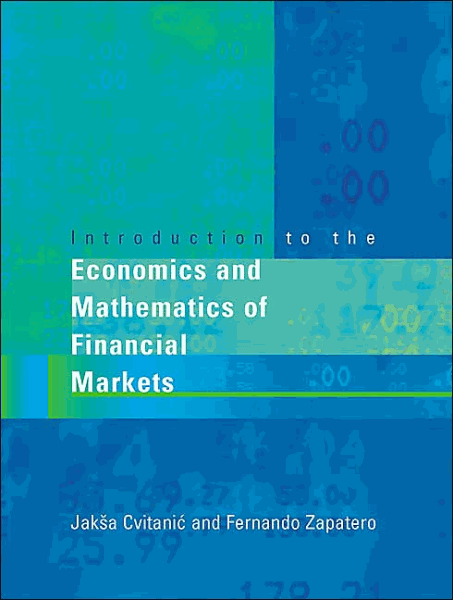Introduction to the Economics and Mathematics of Financial M
From $126.71
Regular edition - Price 126.71
International edition - Price 27.31
Specifications
- 0262033208 ISBN-10:
- 0262033208 ISBN-10
- 9780262033206 ISBN-13
- New Condition
- Paperback, Printed in Grayscale Media
- 5 business days Generally Ships in
- Pearson Education Publisher
- 24/24 Online
- Yes High Speed
- Yes Protection
- In Stock soon, order now to reserve your copy.
- FREE DELIVERY
Last update:
Description
This textbook in financial economics provides a rigorous overview of the subject that--because of an innovative presentation--is suitable for use with different levels of undergraduate and graduate students. Each chapter presents mathematical models of financial problems at three different degrees of sophistication: single- period, multi-period, and continuous-time. The single-period and multi-period models require only basic calculus and an introductory probability/statistics course, while an advanced undergraduate course in probability is helpful in understanding the continuous-time models. In this way the material is given complete coverage at different levels; the less advanced student can stop before the more sophisticated mathematics and still be able to grasp the general principles of financial economics. The book is divided into three parts. The first part provides an introduction to basic securities and financial market organization, the concept of interest rates, the main mathematical models, and quantitative ways to measure risks and rewards. The second part treats option pricing and hedging; here and throughout the book, the authors emphasize the martingale or probabilistic approach, rather than other approaches such as the differential equations approach. Finally, the third part examines equilibrium models--a subject often neglected by other texts in financial mathematics, but included here because of the qualitative insight it offers into the behavior of market participants and pricing. Introduction to the Economics and Mathematics of Financial Markets fills the longstanding need for a text that presents the subject seriously and is accessible not only to graduate students in mathematical finance and financial engineering but also to undergraduate students and graduate students not specializing in finance.
Last updated on





